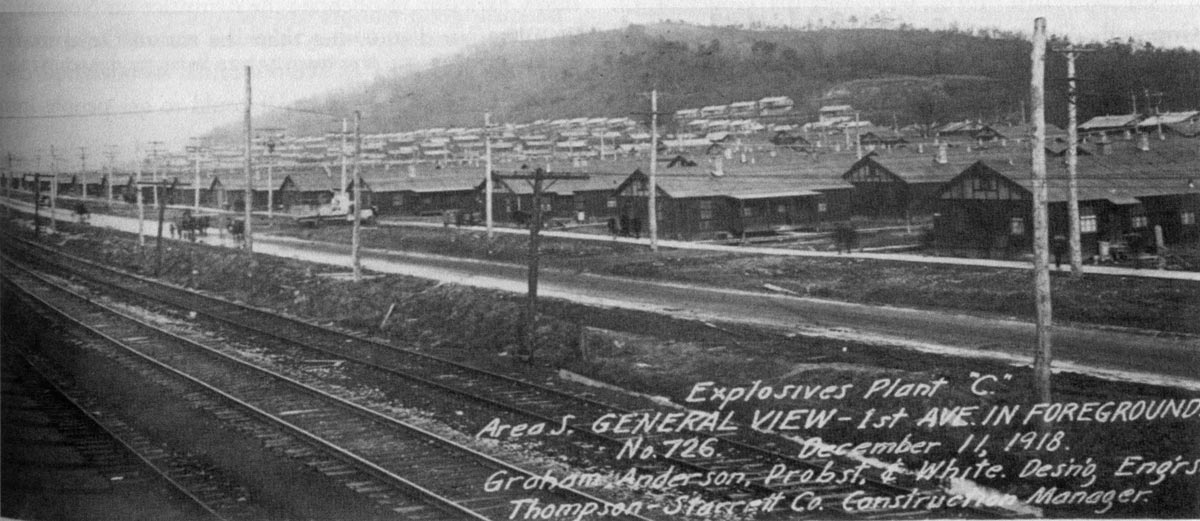
Bill Wintz collection.
At its beginning, the city of Nitro was not considered a railroad town. Prior to the 1880s, Nitro was just another tract of land along the east side of the Kanawha River. However, the construction of the railroad through this undeveloped area played a significant role in its development a year before the end of World War I.
The history of the railroad through Nitro began with the construction of the Atlantic & Northwestern Railroad Company(A&NW) which was originally chartered as the Guyandotte & Ohio River and Mineral Company on February 28, 1872. The name was changed to A&NW on April 1, 1881 and it was during this year that right of way was acquired to build the railroad. The following year, the A&NW was acquired by what was then the Ohio Central Railroad which had a line into Ohio northwest of Point Pleasant, WV. The Ohio Central went into receivership on October 31, 1883 and the portion of the Ohio Central in West Virginia became the Kanawha & Ohio Railway. The Kanawha & Ohio went into receivership on February 19, 1889 after which emerged the Kanawha & Michigan Railway.
The Kanawha & Michigan(K&M) was incorporated on April 25, 1890. On July 1 of the same year the K&M purchased the Charleston & Gauley Railway from Charleston to Dickinson. The K&M extended the line to Gauley Bridge where it connected with the C&O and began operations on August 21, 1893. Thus the K&M had a route from Corning, OH, (approximately 52 miles southeast of Columbus) to Gauley Bridge, a distance of 163 miles.
During its first 10 years of existence, the Kanawha & Michigan was controlled by the Toledo & Ohio Central Railway(T&OC), however, the K&M remained independently operated. Around 1900 the K&M came under control of the Hocking Valley Railway. It was during this period that the K&M was upgraded to handle the requirements of transportation for that period. Then in March, 1910 the Chesapeake & Ohio obtained half ownership of the K&M from the Lake Shore & Michigan Southern, which was affiliated with the New York Central Railroad. By June of 1914, the C&O sold its 50% interest in the K&M to the T&OC because of anti-trust actions brought by several railroads including the New York Central. The K&M remained an independently operated company through the first World War.
The United States’ involvement in WWI created a great and sudden demand for gunpowder. The government needed a location to build a plant and Nitro was selected tops among two other locations which were Nashville, TN and Louisville, KY in that order. Production at the Nitro and Nashville plants exceeded demands such that the proposed plant at Louisville was not needed. It is interesting to note that among the criteria called for in the Deficiency Appropriations Act” (passed by the US Congress on October 6, 1917) for the location of a plant was access to rail and water transportation, the availability of raw materials and the lay of the land. Nitro met those qualifications with the Kanawha & Michigan railroad, the Kanawha River and the 1,772 acres of land available for the plant and housing for the workers.
Ground was broken on December 23rd, 1917 at the site of the present Nitro City Park for the construction of the first of twenty-seven 200 person barracks. Construction of Explosives Plant “C” as it was known was also about to begin. During the 11 months that construction was ongoing, it was estimated that as many as 110,000 or more workers were on the payroll but there were never more than 19,000 on any given day. Turnover rate however was extremely high. The average worker stayed on the job for 40 days.
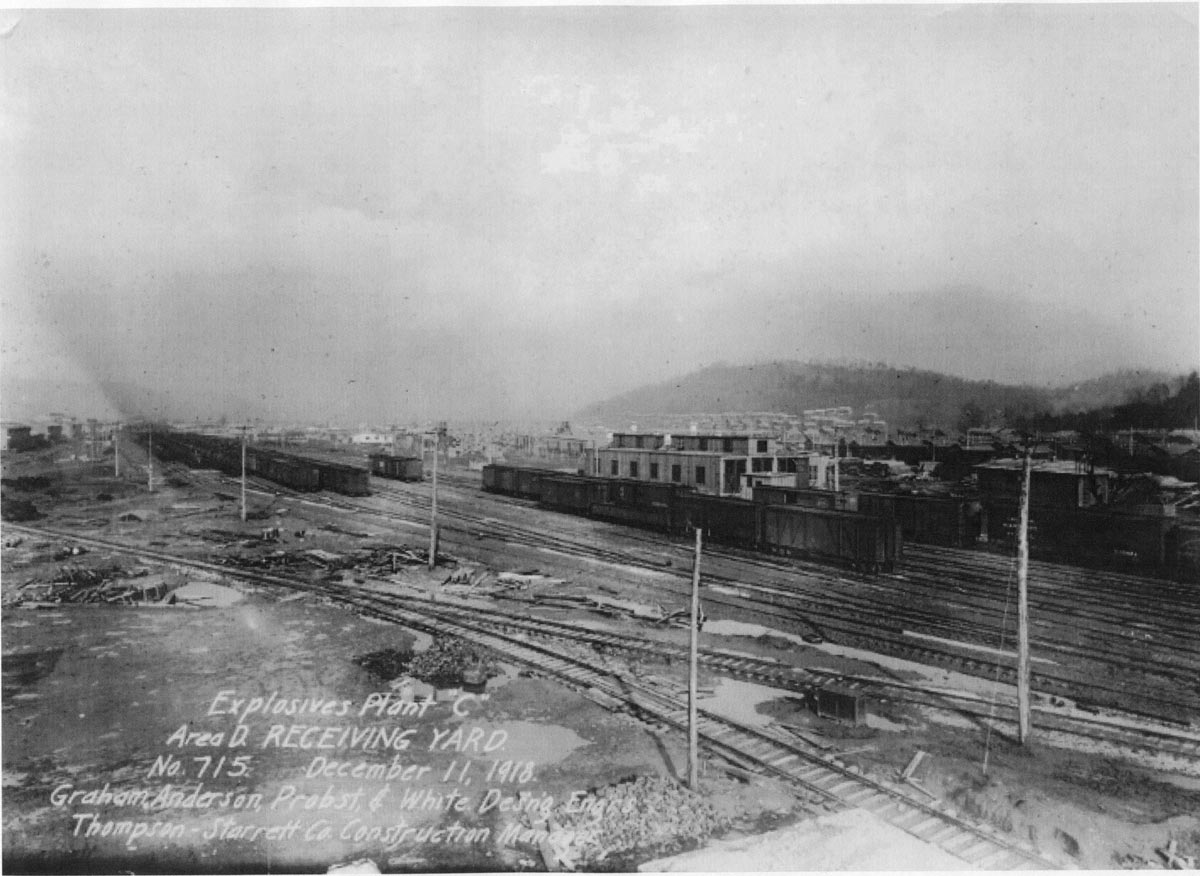
Bill Wintz collection.
The Kanawha and Michigan was in place at the right time and certainly played a big roll in getting supplies and workers into this “boom” town. The government compiled a comprehensive report of railroad car loadings. A total of 37,236 cars were received at Nitro which worked out to an average of 104 cars per day. This included 4,339 carloads or 110,152,000 board feet of lumber unloaded. It was recorded that 141 carloads, or 31,000 kegs of nails were purchased, along with 4,634 picks and 15,879 shovels. In addition, 2,023 wheelbarrows and 2,225 carloads of common bricks were shipped to Nitro for use in constructing smoke stacks and buildings.
There was no laundry plant in Nitro so the laundry had to be shipped out by rail to places that had laundries like Charleston, Huntington and even Parkersburg. Also there were no bakeries, so bread was shipped by rail from facilities in Huntington and Charleston. They did a tremendous business shipping as much as 14,000 loaves of white bread and 3,000 loaves of Italian bread daily.
Because of the large amount of food and materials required, larger distribution centers were tapped. Meat, poultry and general supplies came from St. Louis, Chicago and New York; butter, eggs and cheese from Cincinnati; fish and oysters from Norfolk. Fruits and vegetables were shipped in from the south and west. In all a total of 1,132 carloads of the items listed above were received in Nitro in 1918.
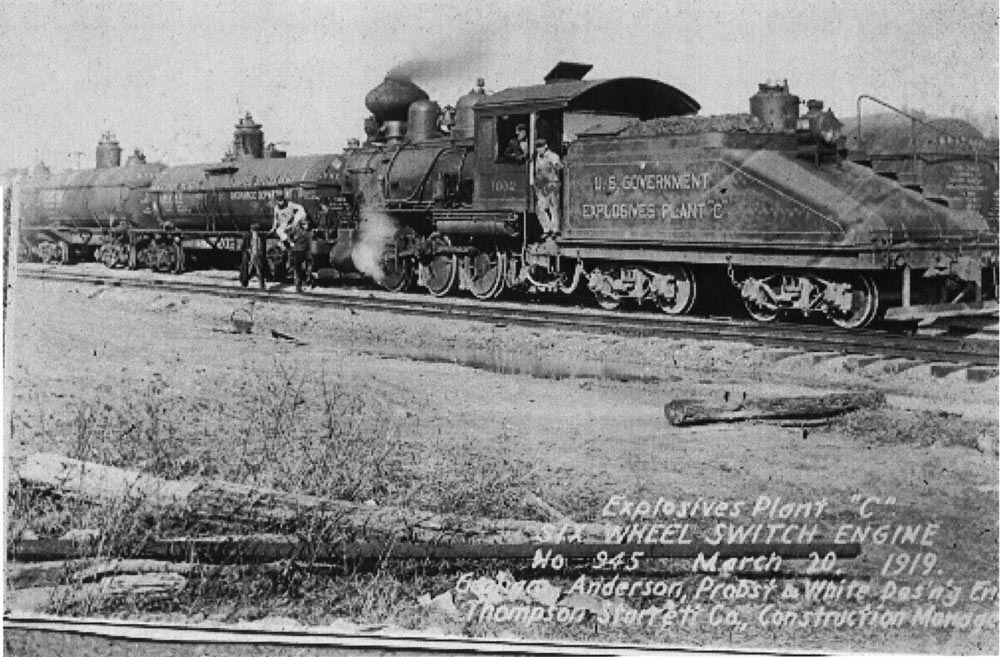
Bill Wintz collection.
The Kanawha & Michigan operated four through passenger trains between Columbus, OH and Charleston. It is interesting to note that all trains were designated with odd numbers. The usual convention was for eastbound and northbound trains to carry even numbers and westbound and southbound trains odd numbers. There was a depot in the southern part of Nitro named Lock Seven. The Nitro depot was located in the northern part of town and was moved in 1925 to the foot of 21st Street where it stood until it was demolished in 1967. A new building across the yard replaced the old depot and is still in use.
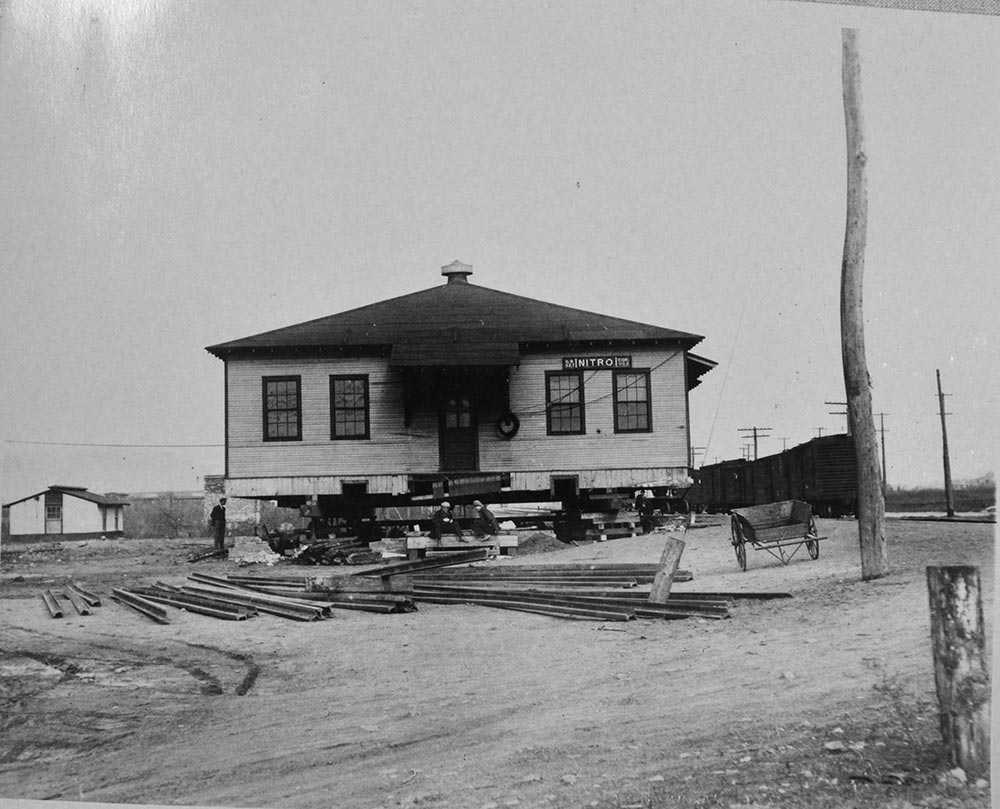
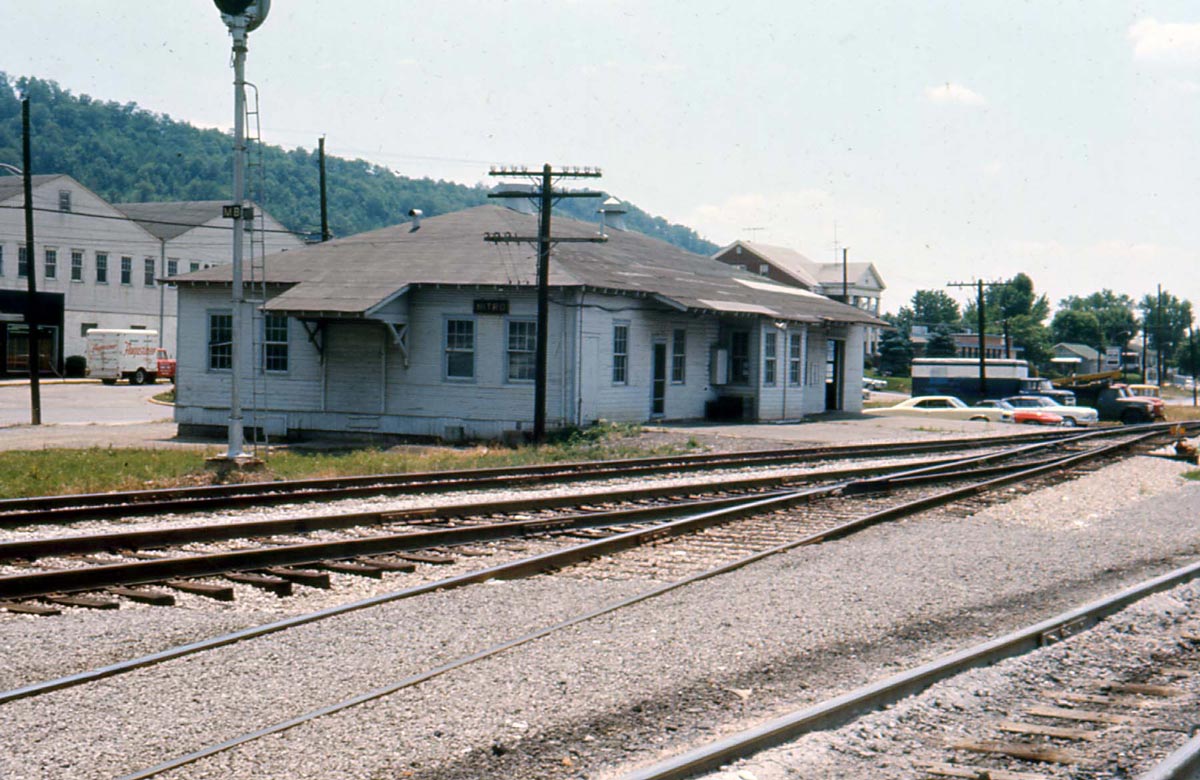
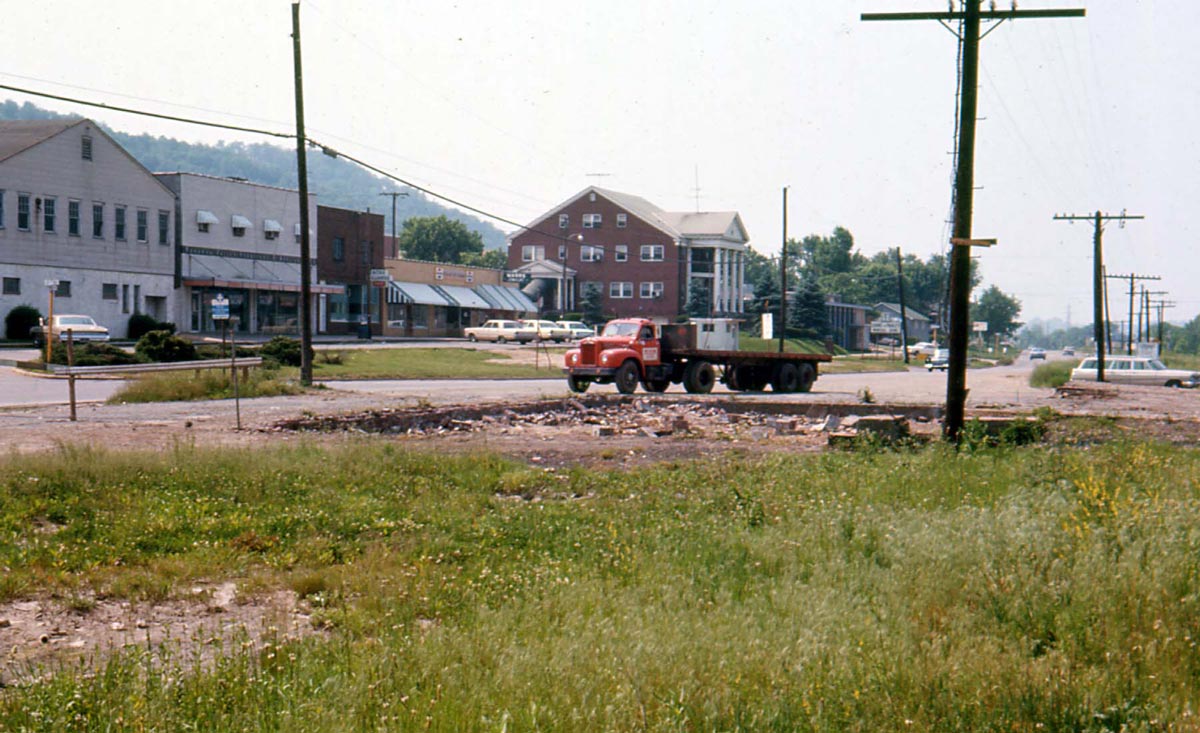
The end of World War I in November, 1918 brought on great celebration but also brought a sudden halt to the production of gunpowder. At that time, Explosive Plant “C” was producing 350 tons a day and 90% of the town was completed. Within two weeks after the end of the war nearly 12,000 people had moved away. The plant was gradually shut down and eventually it and the housing was surplussed and then sold to a group of investors approximately a year later for $8,551,000. People who elected to stay were allowed to buy houses and Nitro was on the way to becoming a self-sustaining community. The city of Nitro was incorporated in 1932.
The Kanawha and Michigan did its job to keep supplies and people moving in and out of Nitro through the 11 months of the war. However things were beginning to change for the railroad. On January 1st, 1922, the Toledo and Ohio Central began leasing the K&M, and on that very same day the T&OC was leased to the New York Central Railroad. Thus the mighty NYC began making its mark in the Kanawha Valley. On June 30th, 1938, the K&M was merged into the T&OC and on June 30, 1952 the T&OC was merged into the NYC thus giving it full ownership.
By 1921 Nitro had become an attractive location for a number of chemical companies and other types of businesses. One of the first to locate there was The Viscose Company, later American Viscose. It originally manufactured cotton linters, an ingredient used in gun powder but later turned to manufacturing rayon fibers. Afterwards other plants began operations including Monsanto, Ohio Apex, General Chemical, the Nitro Pencil Company to name a few. The plants provided much business for the railroad from this time into the 1980s when many of the plants were gradually closing down.
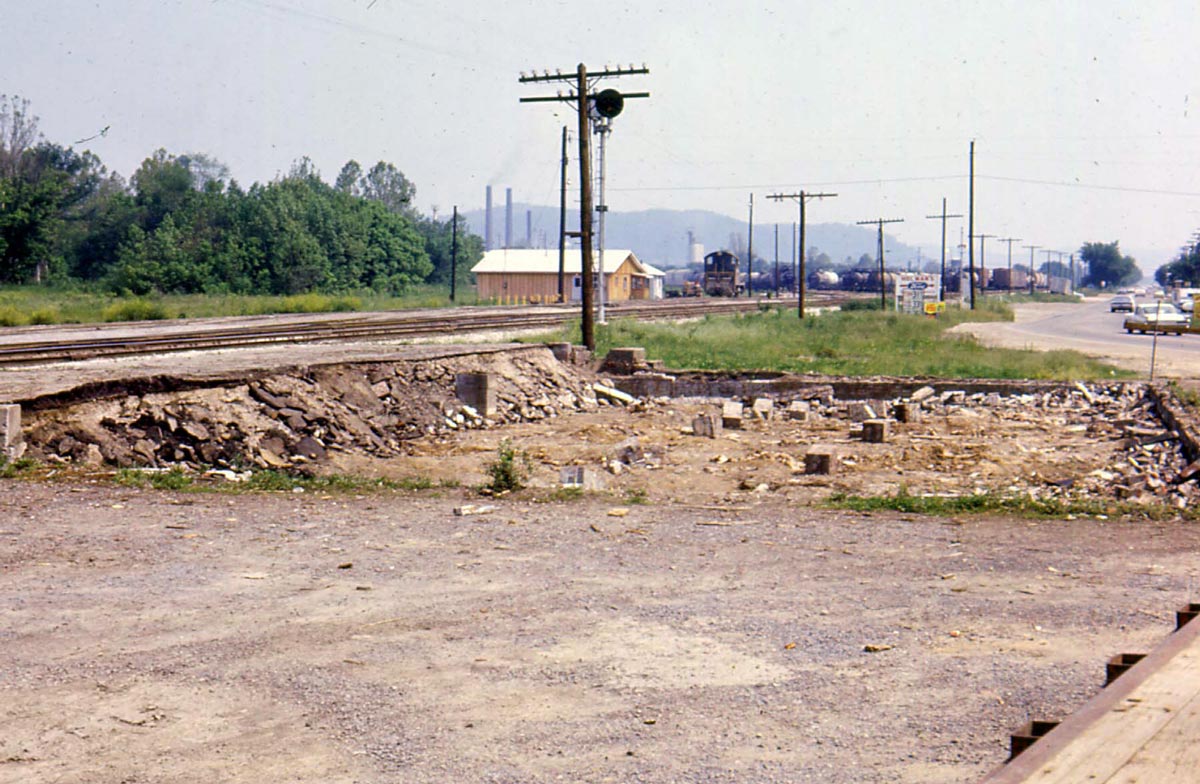
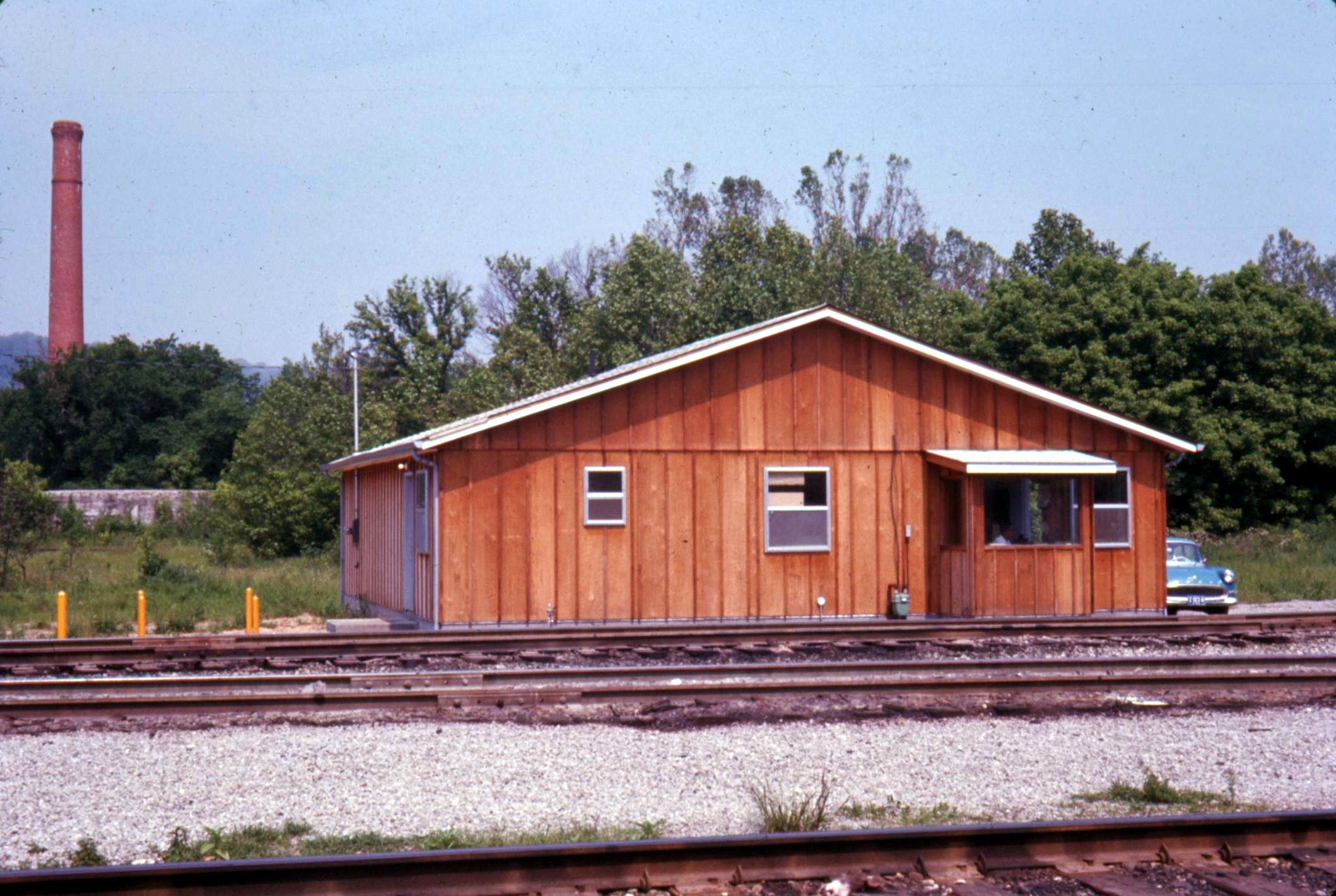
The New York Central served Nitro and the Kanawha Valley for a little over 46 years, but on February 1st, 1968 a new era began when the NYC merged with its rival the Pennsylvania Railroad to form Penn Central Transportation Company. Two years later Penn Central declared bankruptcy, setting the stage for the formation of Conrail on April 1st, 1976, from PC and six other bankrupt railroads in the northeast. The old NYC line through Nitro became part of the West Virginia Secondary of Conrail. Business was fair with merchandise trains, through coal trains from mines in Kanawha and Nicholas counties, and chemicals from other plants in the Kanawha Valley. There was enough business in Nitro to keep the yard operating but not up to the volume of cars that were handled between the 1920s and the late 1970s.
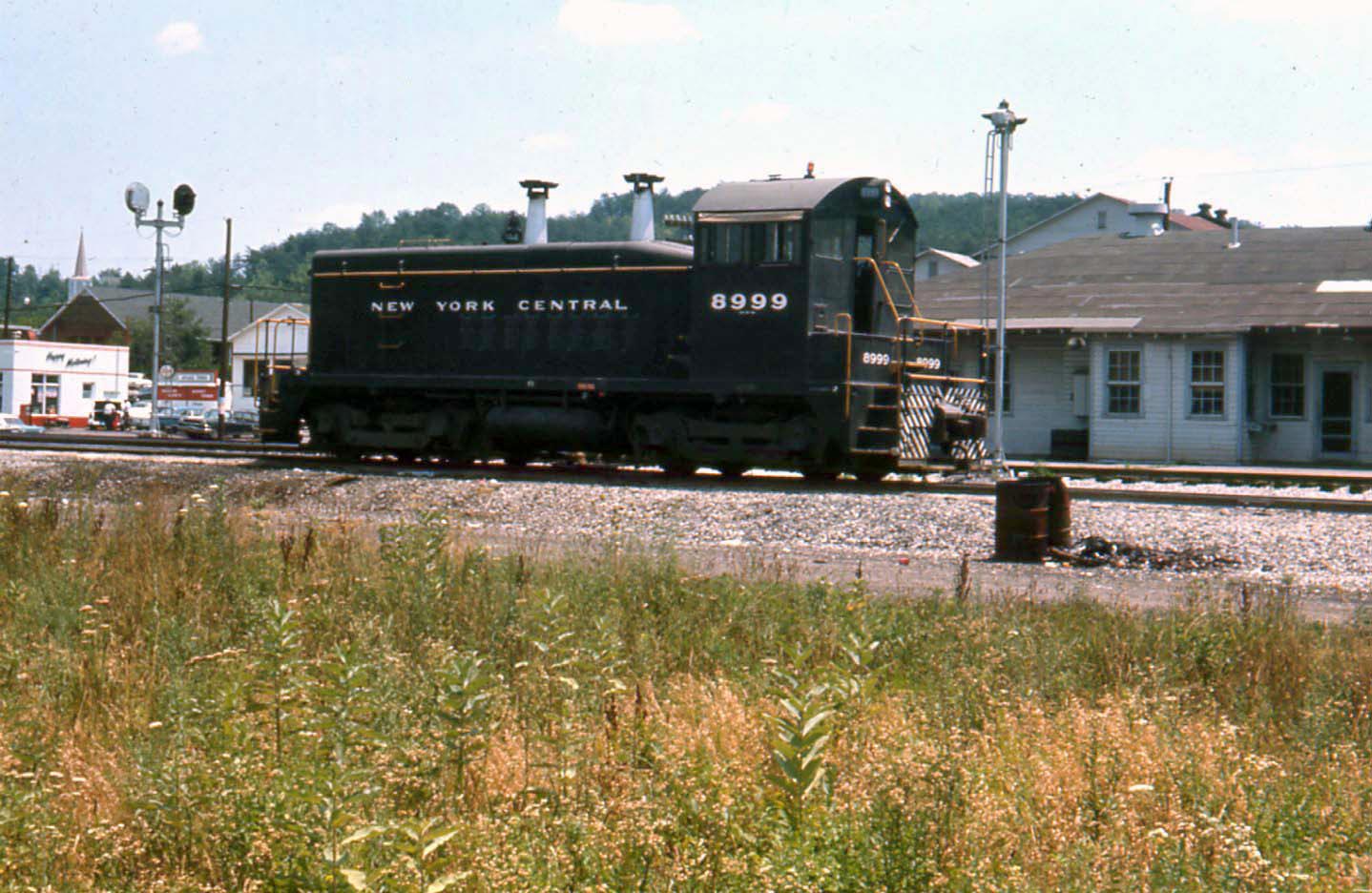
Conrail was government owned at its startup but by 1987 it was returned to the private sector. Ten years later Conrail was jointly acquired by the two other eastern carriers, CSX Transportation and Norfolk Southern Railway. On June 1st, 1999, NS began operating the West Virginia Secondary.
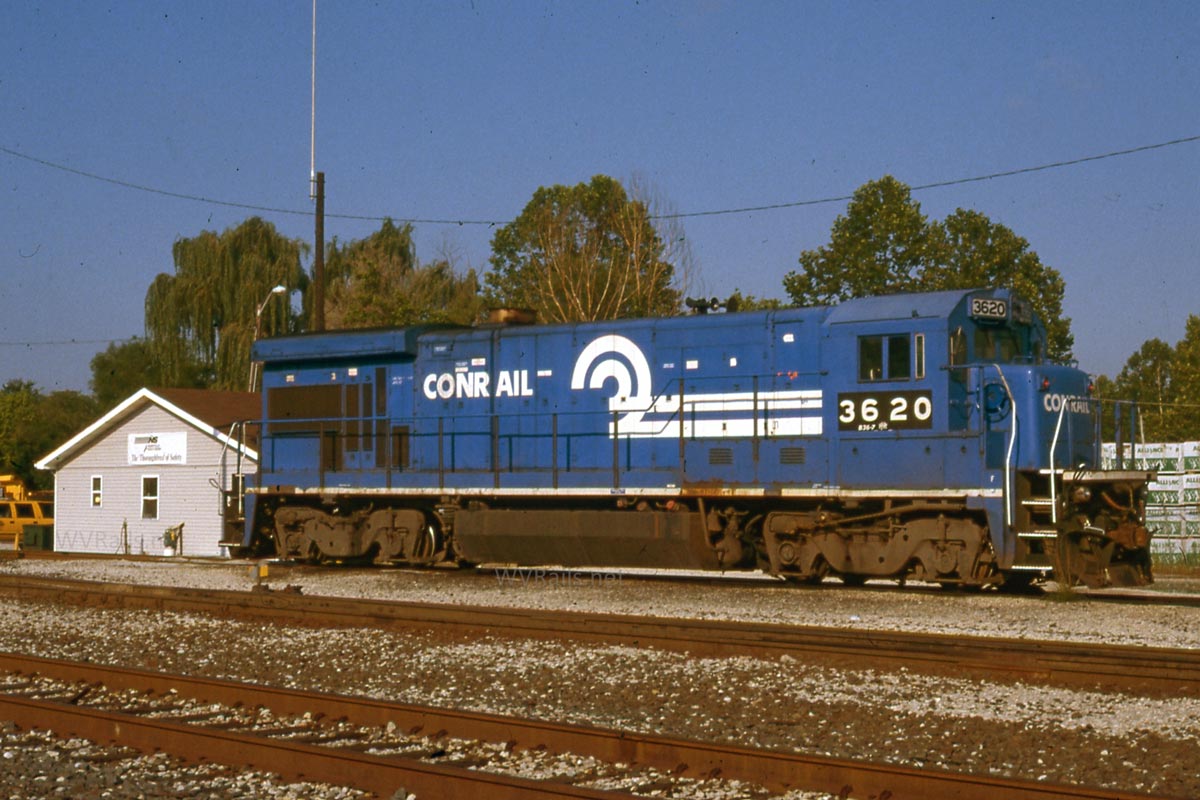
Between 2011 and 2015 Norfolk Southern claimed business on the Secondary had declined 57 percent. Part of the decline was attributed to a decrease in the shipment of coal as power generating stations switched from coal to natural gas. Also chemical traffic and other types of traffic declined as well. Because of this, Norfolk Southern decided in February, 2016 to discontinue the two daily (one each way) trains between Dickinson Yard, near Charleston, and Columbus, Ohio. Freight for Nitro and other points in the Kanawha Valley was rerouted on other NS lines to Deepwater on the former Virginian Railway. No trains operated north of Nitro except occasional one or two car movements to Point Pleasant for interchange to CSXT.
On May 20th, 2016 WATCO Companies, a holding company that owns 35 short line railroads in the United States agreed to lease the West Virginia Secondary (except the first seven miles out of Columbus, OH) from Norfolk Southern. In their press release, The Kanawha River Railroad, LLC, a subsidiary of WATCO, said they plan to return daily through freight service between Columbus and Dickinson Yard through Nitro. Kanawha River Railroad will also lease 53 miles of the former Virginian Railway between Deepwater and Maben. The lease will take effect sometime in July, 2016. This is certainly good news for Nitro and the Kanawha Valley.
While this article is geared toward the railroad’s service to Nitro, resources are available that detail the history of Nitro. One is Nitro-The World War 1 Boom Town by William D. Wintz. Another source that was very helpful in writing this article is The Kanawha & Michigan Railroad – Bridgeline to the Lakes 1888-1922 by Donald L. Mills, Jr. The City of Nitro website cityofnitro.org has more detailed information as well.
Doug Bess – Photographs and text Copyright 2016
See more of Doug’s work at WVRails.net
Great article on the history of the railroad in Nitro, WV. It would be nice to still have the old depot, but that time has come & gone. Thanks, Doug for some interesting viewpoints & excellent research.
Great story about history of Nitro’s trains. Ties right in with Nitro’s Centennial Celebration coming up in 2017 and all the events surrounding it like the placement of one of the wartime plant trains at the Nitro Moose on Sept. 8th!
I used to live here